Cityscape Photography – 11 Tips to Take Your Cityscape Shooting up a Level
by Alex W.
Urbanization in the modern world is showing no signs of slowing down, and some studies suggest that as much as 84% of the United States population live in an urban area.
What does this mean for photography though? Well, an abundance of photographic subject matter right on your very doorstep! There’s street photography and plenty of portraiture opportunities, but what we’re focusing on here is the bright lights of cityscape photography.
Cityscape photography can be loosely related to that most popular of genres, landscape photography. A similar approach of composition, light, and differing exposure length applies, but instead of gurgling streams and mountainous vistas we focus instead on the beauty, glory, and occasionally destruction of human endeavour.
It’s a way to channel your inner landscape photographer in an urban environment. Plenty of keen cityscape photographers make regular trips to the countryside to fulfil their landscape photography needs, and similarly plenty of landscape photographers will travel to the city to get that urban fix.
For this reason, many of the tips from our Ultimate Guide to Landscape Photography can be applied to cityscape photography. There are plenty of tips that are cityscape specific though:
You Might Like… Behind the Lens with Street Photographer Frank Bell
11 Cityscape Photography Tips
Bring Your Tripod
Tripods are a tool that can open up a world of possibilities in photography. Not only do they save you from the dreaded camera shake, but they single-handedly make nighttime photography possible.
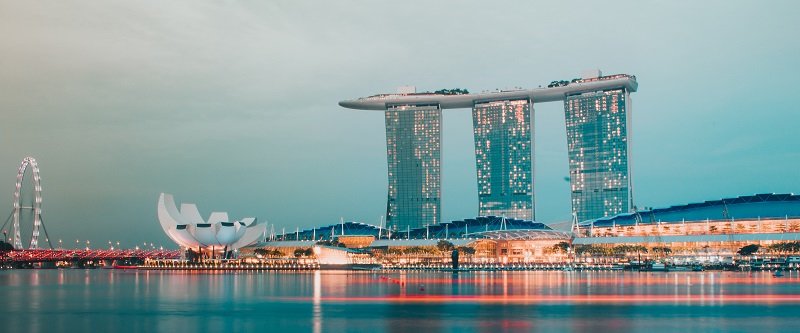
If you want reflections in a river then a long exposure might be necessary. A tripod and a set of neutral density filters is the answer, just as a tripod is the answer to many cityscape photography questions.
Want light trails (more on that later)? Tripod.
Want sunstars from the streetlights? Tripod.
Want to blend exposures? Tripod.
The list goes one, but I won’t bore you with it any more. The takeaway is – Taking a tripod can not only solve many of your cityscape photography problems, but also help your photography in general.
You Might Like… Vanguard Alta Pro 2+ Review
Pay Attention to the Light
This is true of all photography, but with cityscape photography you have both natural light and artificial light to contend with. This can make it a challenge, but it can also provide ample opportunity.
If you find a composition you like then make sure to consider it at all times of the day. For example, shooting a cityscape just after sunset can provide the perfect mix of ambient light, colour in the sky, and the city lights being switched on. Wait a bit longer and you can have a scene with just a touch of ambient light in the sky but with the city lights the centre of attention.
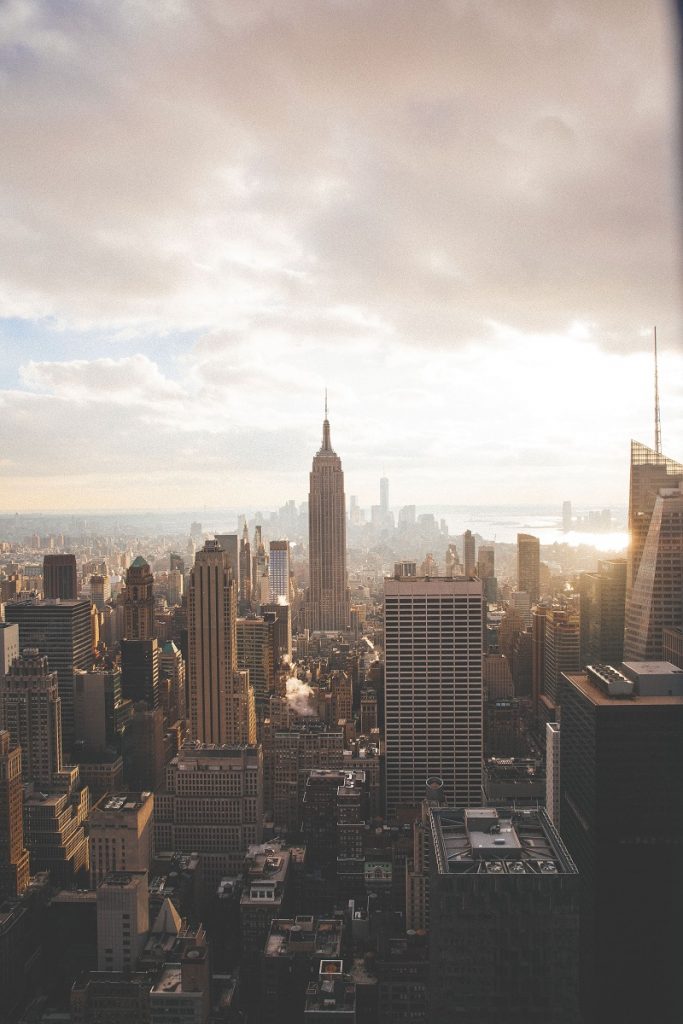
Capturing the setting sun’s light on the side of towering buildings is a great way to add depth and texture to your cityscape images
Of course, the golden hours are always a good time to get out and about. If there are huge glass skyscrapers in your composition then capturing them catching the first rays of daylight can work very well indeed.
Consider all situations, but I find that shooting cityscapes from about 2 hours before sunset until about 2 hours after sunrise the following day is the best for me.
Find the Water
It certainly wasn’t for photographic reasons that the majority of cities were built alongside waterways or the coast, but it’s lucky for us that they did. Water can completely transform a cityscape image.
If a river runs through your city, make sure to spend some time scouting along it for compositions. Capturing the reflections of the sprawling cityscape vista makes for double the drama, and water can make for other excellent compositional elements too.
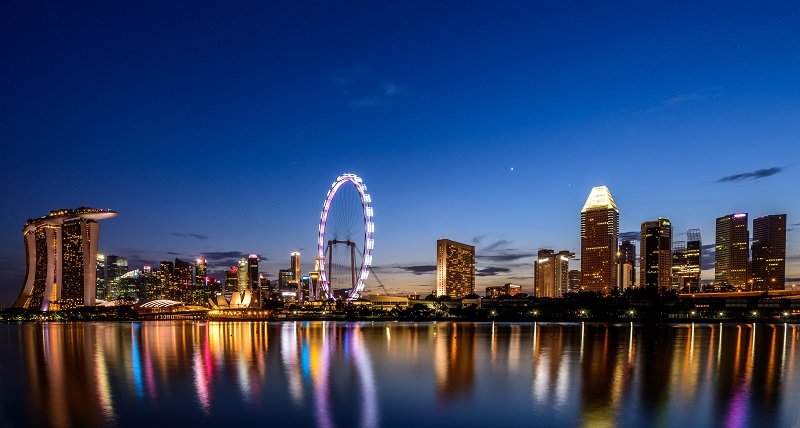
Combining natural light, artificial light, and reflections in water is a path to a gorgeous final image.
Long exposures to capture the moving flow of the river is an obvious one, and finding the bridges crossing the river can lead to some interesting compositions too. Just make sure to find an attractive bridge, because nobody wants a rundown, industrial looking bridge as the main focal point (unless you’re going for documentary style imagery, of course!)
If your city is one of the few that doesn’t have that constant supply of water, just wait until after a heavy storm and capture the cityscape reflected in the standing water on the pavements and roads.
You Might Like… 5 Filters to Transform Your Photography
Get the Aerial View
Find the tallest buildings in your city and see if the highest floors are open to the public, and at which times of the day. Getting the view from up high is a fantastic way to show the sprawl of the city, and offer up a unique vantage point that many of your viewers won’t have seen before.
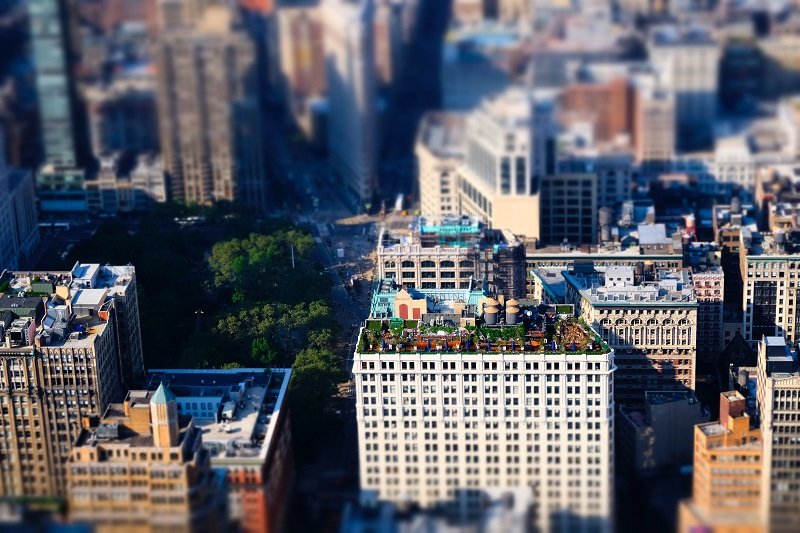
A high vantage point offers a unique perspective on the city, and adding a tilt-shift lens to the equation results in an even more distinctive image.
It’s even better if your vantage point of choice will let you up there after nightfall, when you can photograph the twinkling lights of the illuminated and sprawling cityscape below you.
Remember, even if your building of choice closes to the public at the end of the working day you can always wait until winter. Then, with darkness engulfing the city earlier than usual, you may be able to get up there before it closes. If all else fails – Just ask if there’s any possibility of being allowed in late.
It doesn’t have to be a building either – Many cities have hills or mountains nearby, so getting to the highest point you can and photographing the city from the outside is a great option too.
You Might Like… Best Drones for Under $200
Look Up, Look Down
We spend the vast majority of our lives looking straight ahead, with everything at eye-level. Doing this from a photographic standpoint is akin to creative suicide though!
Cities are filled with towering buildings, and many of them are designed by world-class architects to look as attractive as possible. Make sure to look up at them and find any potential abstract compositions.
If there’s an airport nearby even better! Use apps such as Skyscanner to figure out the flightpaths over the city, and then wait for a silhouetted plane to enter your composition.
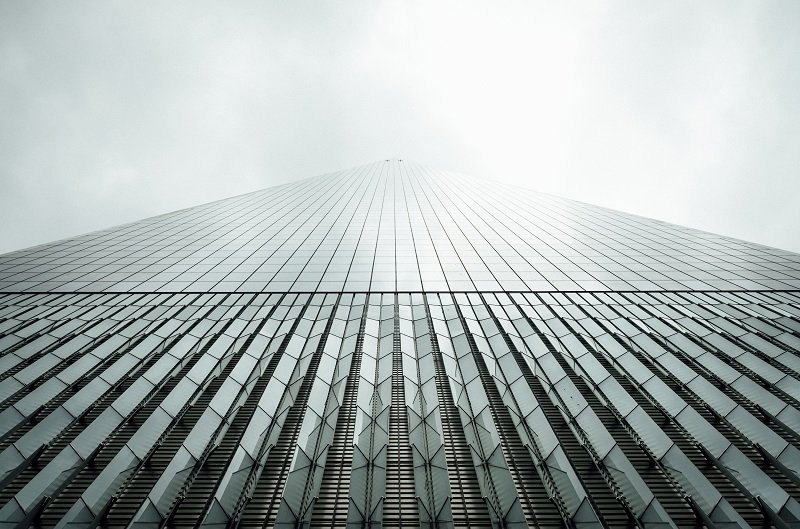
Capturing more abstract images of the city around you is very rewarding, so make use of all the architect’s hard work by looking up at the buildings.
Looking down may not seem as enticing, but wait until the aftermath of a storm and you will have a gluttony of reflections waiting for you. Capture the abstract reflections of people, buildings, and cars in the standing water.
In a word – Hone in on the detail in the city for something different from the more traditional cityscape shot.
Use Roads and Cars at Night
Passing cars cluttering up your shot can be seen as a frustrating aspect of cityscape photography, but come back at nighttime and you can get your own back on them.
No, I don’t mean slashing their tyres. Please don’t do that.
Instead, use that road and the cars using it in your photography. Shooting a long exposure at night, with passing cars in your frame, will yield stunning light trails from the cars lights.
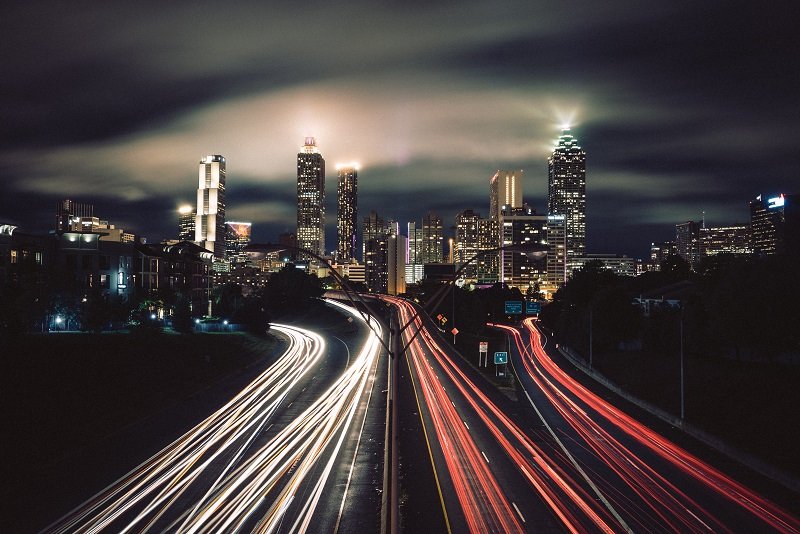
Light trails from moving cars can be a real attention grabber for the viewer, and will guide their eye towards the gorgeous cityscape beyond.
For example, if you can find a nice curving road towards your main subject then you can fill that beautiful leading line with the tail lights of passing cars to create a stream of red light leading the viewer’s eye into the image.
Experiment with exposure time, and decide whether the white lights of headlights or the red of tail lights is preferable, and then shoot away!
Create Sunstars at Night
Sunstars are often seen in landscape photography, with a stopped down aperture transforming the round sun into crisp, bursting sunstar. No doubt you’ll have seen it before, but this technique isn’t limited to the sun!
You can do exactly the same with the streetlights in your city. A great example is a bridge flanked by street lamps, with each one of those lights transformed into an elegant star.
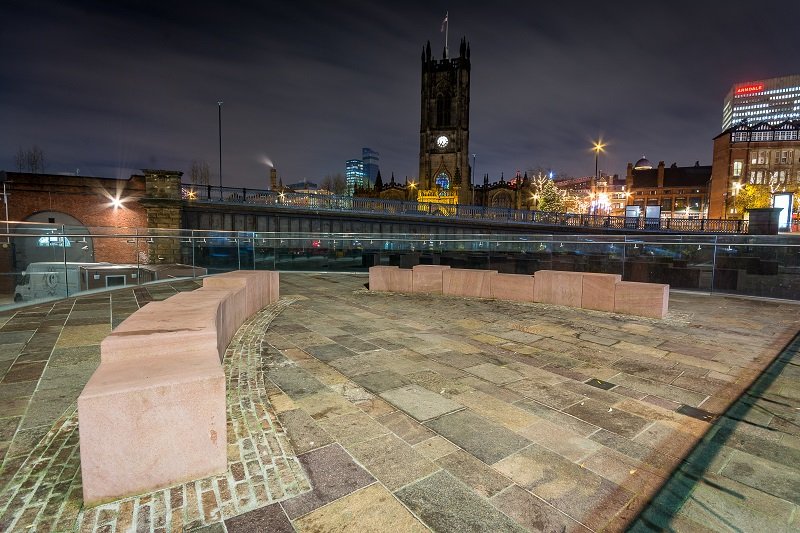
Use a small aperture to transform the light from street lights into dramatic sunstars.
The technique is pretty simple to achieve. Basically, you want to choose a small aperture. I’d suggest starting at f/11 and working your way through the smaller apertures to find the sweet spot.
Don’t just experiment with the aperture though – Try out different lenses as well. The lens choice has a huge impact on the type of sunstars you will see. Obviously a higher quality lens will yield higher quality results, but the construction of the aperture itself has an enormous impact. For example, a lens with 8 blades in the aperture will produce sunstars with 8 points, whereas one with 9 blades will give us a huge 18 points on our sunstars.
Basically, if your lens has an even number of aperture blades, the points on your sunstar will be equal to the number of blades. If your lens has an odd number of aperture blades then the points on your sunstar will be double the number of blades. You will be able to find out how many aperture blades your lens has on the manufacturer’s description.
Pay Attention to the Date
This all depends on which city and country you’re shooting in, but the date can have a huge impact on your cityscape photography.
For example, many cities set up Christmas markets throughout December, and combining those festivities with some wintry snow in your cityscape image can yield incredible images.
It’s not just Christmas either – If you’re in the United States then July 4th sees many cities let off fireworks to celebrate Independence Day.
Staying in the US, you can also capture the poignancy and tragedy of international terrorism in New York City. The Tribute In Light is an installation of lights that are illuminated annually on the anniversary of the 9/11 attacks on the World Trade Center, creating 2 towering pillars of light to commemorate one of the defining moments of this generation. I promise you that it will send shivers up your spine.
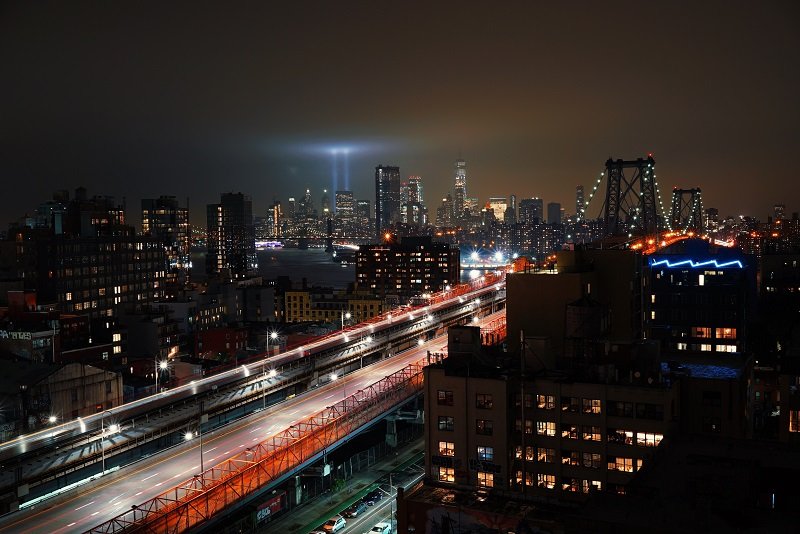
The Tribute in Light in New York City is a poignant reminder of one of the most devastating days in modern history.
There are many more local events that can influence the entire look of the city you’re shooting, so look into it and see if there’s anything that catches your eye. Another couple of examples are the Empire State Building being illuminated in pink for Breast Cancer Awareness and the Eiffel Tower’s periodic displays of unity or celebration.
You Might Like… Ultimate Guide to Autumn Photography
What’s the Weather Doing?
It goes without saying that the type of weather can completely change the feeling and look of a city. A rain storm sees an influx of umbrellas, for example, whereas a sunny day will be defined by the presence of shorts and tee shirts.
Obviously, it can also impact the look of the city for your photography too. A foggy day in San Francisco is hard to beat, while capturing the rolling low clouds in Dubai from the top of the Burj Khalifa is something that every cityscape photographer strives for.
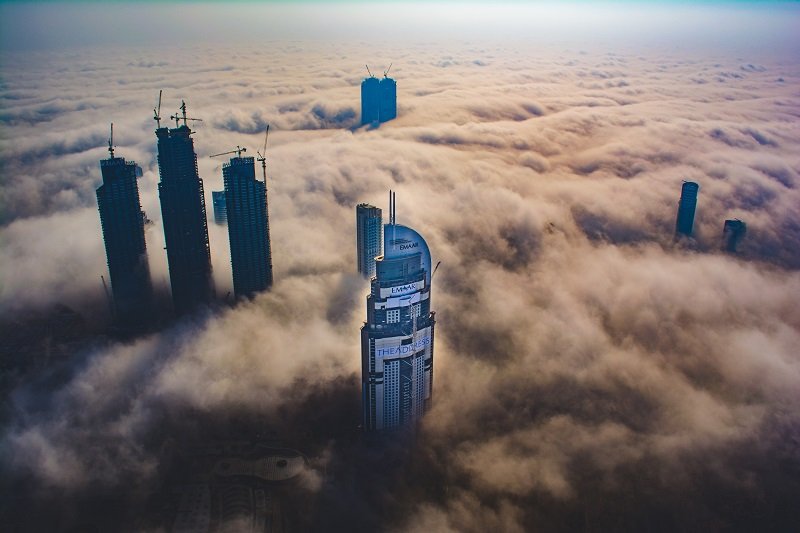
Capturing the skyscrapers emerging from the Dubai fog is a goal of many cityscape photographers worldwide.
Whether you want to capture the essence of a city by photographing it in it’s usual state, or you want to show a more irregular side of the city with some unusual weather conditions, it doesn’t matter. Just remember that the weather conditions can emphatically transform the final image you create.
As a side note – Head out at sunset just before or after a storm and you’re in for a real treat!
You Might Like… Photography in the Rain – Making the Most of a Rainy Day
Use the Pedestrians
It’s easy to get frustrated with members of the public who are inadvertently ruining your image by going about their daily lives. I mean, who wouldn’t get annoyed when somebody walks right in front of your lens just as you press the shutter?
An easy way to avoid this is by heading out at the quieter times of the day, such as sunset, sunrise, and night.
However, you could always embrace the hustle and bustle. Try to capture the essence of how busy the city is by including pedestrians in your images. This could be considered a form of street photography, but who cares what genre you’re shooting as long as you like it?
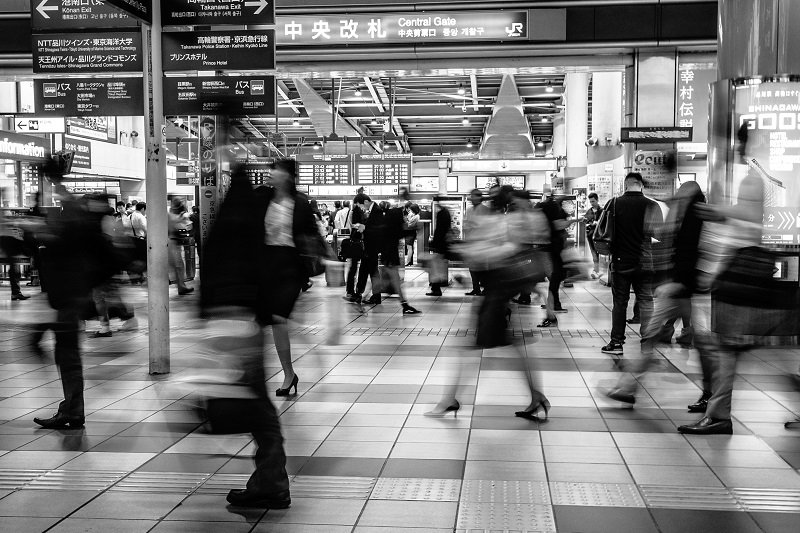
Slow down your shutter speed and capture the hustle and bustle of city life by blurring the movement of pedestrians.
One brilliant way of really portraying the bustle of city life is to use a fairly long exposure to convey the movement of people. For example, stand at a busy crossing place and use a neutral density filter to get a shutter speed of 0.5 – 5 seconds and shoot away. Experiment to find the perfect exposure time, and you’ll come away with an image showing a true representation of daily life in your city.
Find Your Focal Point
It’s very easy to fall into a rut in cityscape photography, constantly returning to similar compositions and quickly running out of ideas. The same can be said of many genres of photography, but with such a static subject as a city it can quickly lead to predictable images.
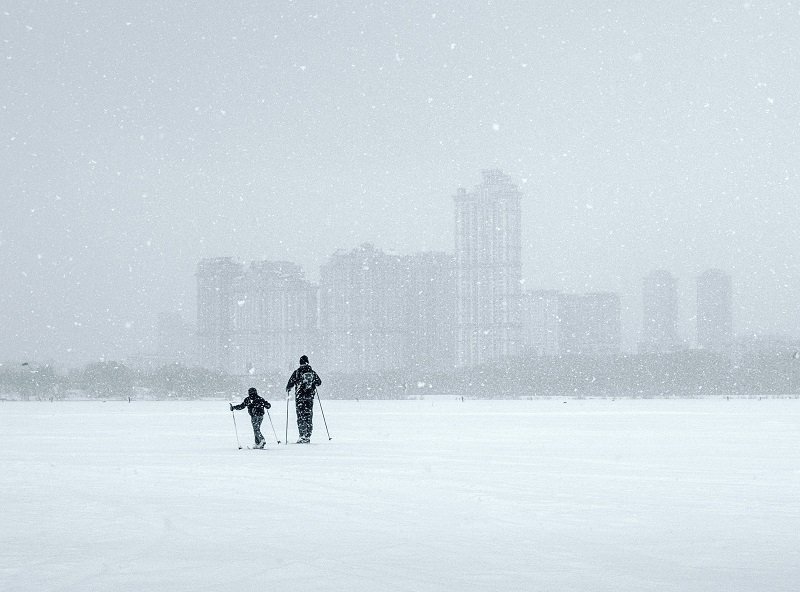
Try to consider the city from all different angles and in all different conditions to vary your portfolio and keep things fresh.
Battle this by always scouting out new potential focal points. It could be anything from an historic fountain to a newly constructed bridge. Cities are literally filled with interesting things, whether it be structures, statues, museums, or skyscrapers. That’s not even mentioning the people!
Make sure to explore as many of them as possible and vary up your portfolio.
Closing Thoughts
Cityscape photography may be a genre unto itself, but it shares some vital traits with other genres. Landscape photography is the obvious one, but there’s also street photography to consider.
Any of these tips are transferable, as are most landscape photography or street photography tips to cityscape photography. In fact, bringing ideas from other walks of photography is a great way to imprint a unique style onto your cityscape photography.
Above all, always enjoy yourself! Shoot what you like, but don’t be afraid to try new things such as shooting in different weather conditions and with different viewpoints. Cities are wonderful for exploring, and photography is a great tool to take you to places you would otherwise never visit.
Read More…
The Photographer’s Glossary – A Guide to Common Photography Terms
Behind the Lens with RJ Franklin
Forest Photography Lightroom Presets
29 Perfect Gifts for Photographers – The Photographer’s Wishlist
 |
 |
 |
 |

About Alex W.
Alex is the owner and lead writer for Click and Learn Photography. An avid landscape, equine, and pet photographer living and working in the beautiful Lake District, UK, Alex has had his work featured in a number of high profile publications, including the Take a View Landscape Photographer of the Year, Outdoor Photographer of the Year, and Amateur Photographer Magazine.
Thoughts on "Cityscape Photography – 11 Tips to Take Your Cityscape Shooting up a Level"
 |
 |
 |
 |
You can Get FREE Gifts. Furthermore, Free Items here. Disable Ad Blocker to receive them all.
Once done, hit anything below
 |
 |
 |
 |